The Center for Economic Research and Reforms (CERR) regularly analyzes changes of demand in the real estate and car markets. A gradual increase of demand in these markets during January – June indicates economic recovery in Uzbekistan.
Compared to June 2020, this indicator increased by 12.9% and growth compared to June 2019 was 29.6%.
Fig.1. Index of changes in the number of registered and re-registered cars in June 2021.
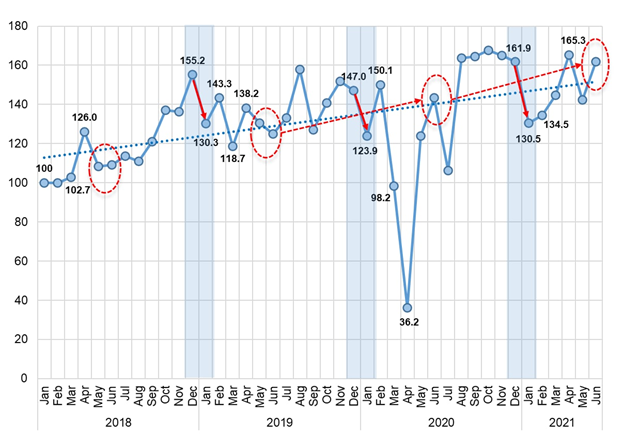
During the reporting period, the number of registered and re-registered vehicles increased rapidly in all regions (except for the Syrdarya region). The highest growth rates were recorded in Namangan (22.6%), Navoi (20.9%), Samarkand (18.8%), Fergana (16.2%) and Tashkent (16.4%) regions.
Fig.2. The relationship between car loans and demand for cars in January-May 2021.
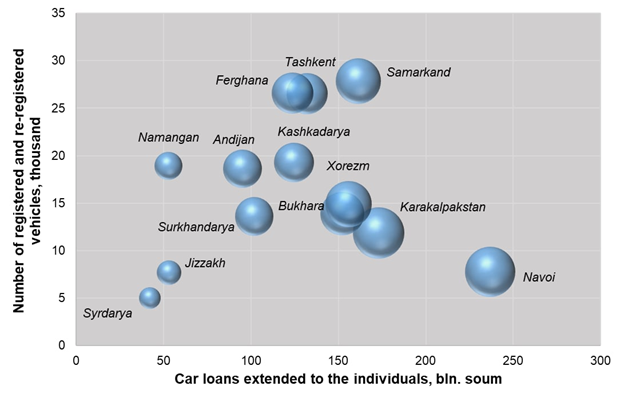
The results of the analysis show that there is a significant correlation between the volume of car loans and the demand for cars.
An increase in car loans by 10% leads to an increase in the number of registered and re-registered cars by 4%.
It should be noted that in January-May, car loans in the country amounted to 2.67 trillion soums, which is 40.5% more than in the same period of 2020. The highest growth rates were in Tashkent (growth - by 104.2% or 1.1 trillion soums), Khorezm (by 66.5% or 155.7 billion soums), Bukhara (49.8% or up to 152.2 billion soums), Andijan (42.7% or up to 95.2 billion soums) and the Republic of Karakalpakstan (56.3% or 173 billion soums).
In June 2021, 18.9 thousand new cars were registered. From these, 1,171 (6.2%) are foreign cars.
The most of all foreign cars were sold were in Tashkent city (11.8% of new cars), in Tashkent (5.7%), Samarkand (3%) and Khorezm (2.4%) regions.
Fig.3. The share of sales of new domestic cars and foreign cars in January - June 2021
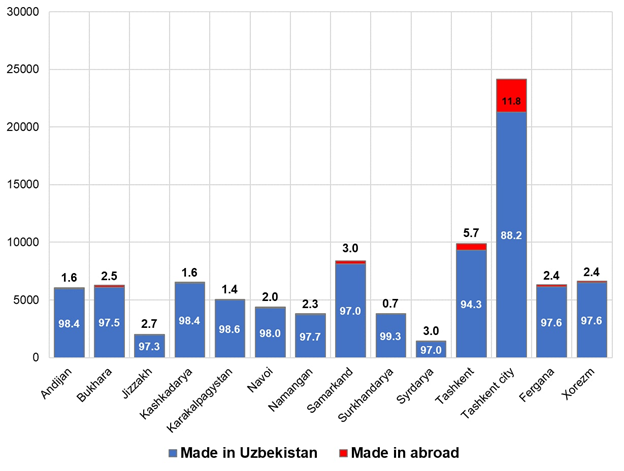
Taking into account the fact that the Uzbek car market was growing in the previous year, the impact of the coronavirus can be considered minimal. The most severe quarantine phase in the republic fell on February and led to a 73.8% drop in vehicle sales, but already in June dealerships started working again, and in the second half of the year the market started to grow.
As the shortage of semiconductors (computer chips used in modern cars to control increasingly complex electronics) continued to slow shipments and increase wait times, nearly every brand continues to struggle to supply new vehicles, and there are many customers who have already placed an order and are waiting for the car to be delivered.
Numerous dealers have a significant number of orders due to be delivered in the coming months, indicating a possible increase in the second half of the year.
* A detailed analysis of the real estate and automobile markets can be provided upon request to the Center for Economic Research and Reform.
Khalilullokh Khamidov, Chief Researcher, CERR
tel: (78) 150-02-02


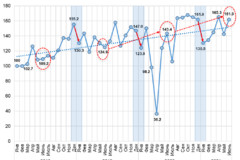
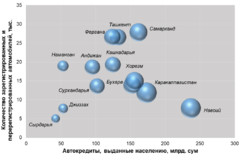
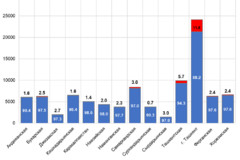



















leave a comment